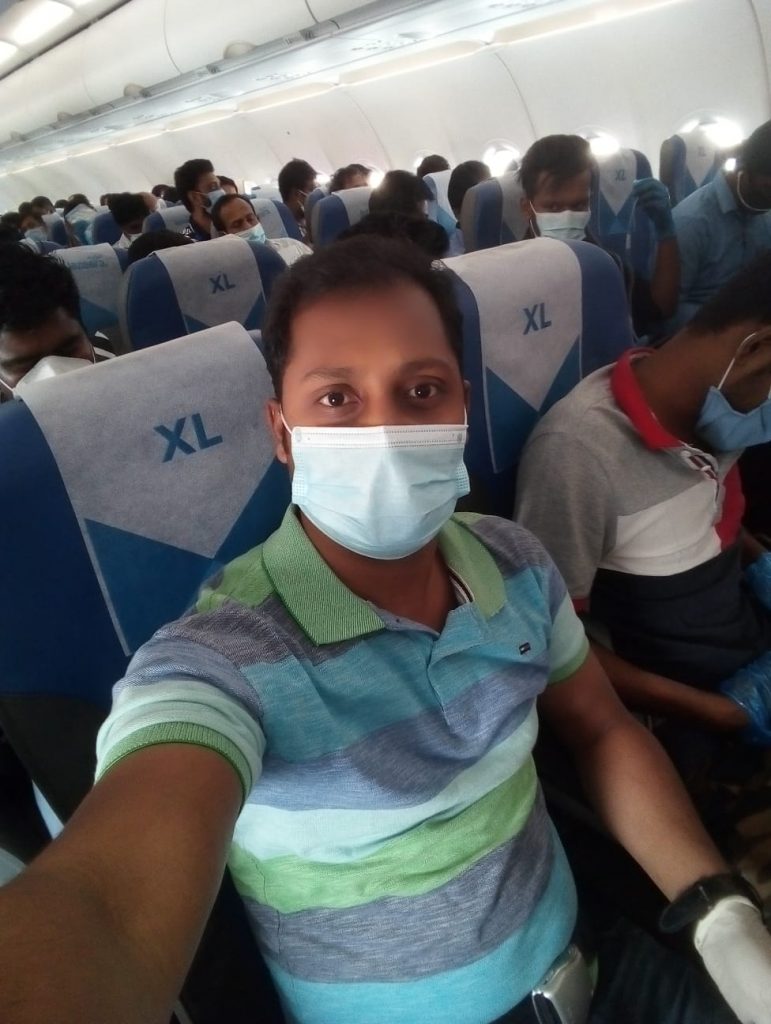One-way ticket home for overseas Nepali workers
Repatriation of workers from other countries shows the challenges ahead for Nepal government
As Nepal prepares to bring home the first batch of 25,000 overseas migrant workers home, there are lessons to learn from the experience of India, Sri Lanka, Bangladesh and the Philippines which have been repatriating their citizens during the global pandemic.
There have been concerns about lack of proper tests before boarding and on arrival, quarantine facilities when they reach their home countries, and the longer-term challenge of finding employment there.
“When we see Indians, Filipinos and Bangladeshis going home, it makes us more impatient,” says Laxmi, an undocumented worker in Kuwait who is among 3,500 Nepalis that have applied for amnesty and flights home paid by the Kuwait government. She has been in a makeshift camp for three weeks now.
Back in Kathmandu, the government says it is drawing up plans to bring back the first lot of migrants, giving priority to stranded undocumented workers, pregnant women, those whose contracts have ended or who have been lost jobs, and Nepalis on short-term and tourist visas.
Once in Nepal, they will first be quarantined in Kathmandu or Dhulikhel and tested using PCR kits and sent to their home districts if they test negative. This is different from Nepali returnees from India who have started crossing the border in the thousands with the local governments entirely responsible for quarantine and tests.
Asad is a Bangladeshi undocumented worker in Kuwait who was lucky to get on the first flight back to Dhaka. “I did not expect to be selected as I am not as vulnerable as many others who are kept in makeshift camps in the desert. I just had two hours to pack and go to the airport,” he told us on the phone.
At the airport, rapid diagnostic tests were done, temperatures taken and passengers had to answer questions about symptoms. They were only allowed to board the plane if negative. Asad says he was nervous about being infected in the flight even though they were all given PPEs to wear throughout the journey. At Dhaka airport, only their temperatures were taken and given gloves, masks and sanitisers and 5,000 takas to take transport home.

For now, Asad says he is just relieved to be with his family, “I have to self-isolate no matter how impatient I feel about hugging my children and meeting my friends after so long.”
It is likely that Kuwait will be the first country from where Nepalis will be repatriated from. But the case of Indian and Sri Lankan returnees from Kuwait testing positive upon arrival shows that the Nepal Embassy and the Kuwait authorities need to take pre-departure tests seriously. The number of cases in Sri Lanka spiked by 137 on a single day on 16 May – 127 of them were returnees from Kuwait.
Another country from where large-scale repatriation of migrant workers is taking place that has lessons for Nepal is the Philippines.
Rose is a Singapore-based Filipino graphic designer and has just flown home to Manila. Singaporean law requires employers to pay for the return flight of workers, so there was no hassle about the fare. But she says her airline did not check before boarding if she had tested negative for COVID-19. Even though passengers on the crowded flight all wore masks, the Filipina knew she was taking a risk.
At Manila airport, RT-PCR tests were conducted by the Bureau of Quarantine, the Philippines Coast Guard and the Philippine Red Cross. Passengers were then taken to hotels by the Department of Tourism, where they remained until they received their test results.
“For overseas workers, everything is paid for by the government’s Overseas Workers Welfare Administration (OWWA). Non-workers have to pay hotel costs,” Rose said. Paying non-worker returnees can choose a hotel as long as it is accredited by the Department of Health, while returning workers went to specific quarantine hotels booked for all passengers of the same flight to ease contract tracing. Passengers on the same plane are released together, but if one tests positive, all passengers are transferred to COVID-19 isolation wards for further tests.
The Philippine authorities follow strict protocols for hotel quarantine with only one person per room, which they are not allowed to leave. Three meals a day are provided in the rooms. Test results usually come 4-5 days later. Returnees also need a Quarantine Certificate to return to their provinces in transport provided by the government.
“There had been cases of local governments not accepting returnees, but the central government ordered all local authorities to allow them if they had their quarantine certificates with negative test results,” says Rose.
Earlier this month, the Philippines temporarily halted repatriation because the arrival quarantine facilities were full, and now has a limited intake of 400 passengers a day. Out of its total population of 107 million, 12 million Filipinos work abroad, mainly in the Gulf, the United States, Australia, Japan, Hong Kong and Europe.
Rose is happy to be back with her family and thinks her government has done a good job bringing its nationals home, and adds: “The government is really struggling because of the high influx of Filipinos and there are many lapses in the process. But overall, they are trying to get this done in a systematic and humane way.”
This article was first published on Nepali Times.